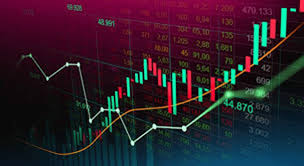
Mastering Forex Day Trading: Strategies for Success
Forex day trading is a dynamic and exhilarating approach to trading currencies that requires discipline, strategy, and a solid understanding of market movements. For those looking to dive into this fast-paced environment, forex day trading ZAR Trading provides crucial insights and resources. In this article, we will explore the fundamentals of Forex day trading, effective strategies, risk management techniques, and tools to help traders succeed in the bustling foreign exchange market.
Understanding Forex Day Trading
Forex day trading involves the buying and selling of currency pairs within a single trading day. Unlike traditional investing, where positions can remain open for months or years, day trading focuses on short-term price movements to capitalize on shifts throughout the day. Traders employ various techniques, such as technical analysis, fundamental analysis, and market sentiment to make informed decisions.
The Benefits of Day Trading
One of the primary advantages of Forex day trading is the potential for quick profits. Unlike long-term investments, day trading allows traders to benefit from small price fluctuations. Additionally, day traders can avoid the risks associated with holding overnight positions, such as economic events or market news that could impact currency prices.
Key Concepts in Forex Day Trading
Before diving into strategies, it's essential to understand some key concepts in Forex day trading:
- Leverage: Forex trading often involves using leverage to increase potential returns. However, it magnifies risks, so using it wisely is crucial.
- Liquidity: The Forex market is known for its high liquidity, allowing traders to enter and exit positions without significant price changes.
- Volatility: Price fluctuations in the Forex market can be substantial. Successful day traders often thrive in volatile conditions where price movements can be exploited for profit.
Effective Day Trading Strategies
Successful Forex day trading relies heavily on sound strategies. Here are several approaches traders can use:
1. Scalping
Scalping is a high-frequency trading strategy where traders aim to make small profits from minor price changes. Scalpers typically hold positions for just a few seconds to minutes, entering and exiting trades rapidly. This strategy requires a solid understanding of market conditions and the ability to execute trades quickly.
2. Momentum Trading
Momentum trading involves capitalizing on trends in the market. Traders look for currency pairs that are moving significantly in one direction, aiming to ride the wave until signs of a reversal appear. Technical indicators such as moving averages or the Relative Strength Index (RSI) can help identify momentum.
3. Breakout Trading
Breakout traders focus on identifying key levels of support and resistance. When the price breaks through these levels, it often leads to significant price movements. Traders will buy when the price breaks above resistance or sell when it breaks below support, aiming to profit from the subsequent movement.
4. News Trading
Events such as economic reports, interest rate decisions, and geopolitical developments can cause substantial volatility in the Forex market. News traders monitor economic calendars and trade based on expected market reactions to these events. Understanding the implications of news releases is critical for success in this strategy.
Risk Management Techniques
Effective risk management is crucial in Forex day trading, as the rapid nature of trades can lead to significant losses without proper precautions. Here are essential risk management techniques:
1. Set Stop-Loss Orders
Stop-loss orders automatically close a position once it reaches a certain price, limiting potential losses. Placing these orders helps protect traders from unforeseen market movements.

2. Use Take-Profit Orders
Take-profit orders allow traders to set a target price where they will automatically close a position for a profit. This helps capture gains without the need for constant monitoring.
3. Manage Position Size
Proper position sizing is essential to protect capital. Traders should determine how much they are willing to risk on each trade and adjust their position size accordingly. A common rule is to risk no more than 1-2% of total capital on a single trade.
Essential Tools for Day Traders
Successful day traders often rely on various tools and software to enhance their trading experience:
1. Trading Platforms
A good trading platform enables traders to execute trades efficiently and access essential market data. Popular platforms like MetaTrader 4 and TradingView provide various tools for technical analysis and charting.
2. Economic Calendars
Economic calendars keep traders informed about upcoming economic events that may affect currency prices. Traders should prioritize events with higher anticipated impacts.
3. Technical Analysis Tools
Tools such as indicators, chart patterns, and oscillators assist traders in analyzing price movements and making informed decisions. Familiarity with common indicators like Moving Averages and Fibonacci retracement can enhance trading strategies.
Continuous Learning and Improvement
The Forex market is constantly evolving, and successful traders must commit to ongoing learning and improvement. Here are a few tips to advance your skills:
1. Keep a Trading Journal
Maintaining a trading journal is invaluable for tracking performance, identifying mistakes, and refining strategies. Documenting trades, outcomes, and emotions can provide insights that lead to improvement.
2. Stay Updated
Regularly following market news and trends is crucial for staying relevant. Join trading communities, read articles, and engage with experienced traders to gain insights and knowledge.
3. Practice with a Demo Account
Before risking real capital, practicing with a demo account can help traders familiarize themselves with platforms and strategies. Use this opportunity to test ideas without the pressure of losing money.
Conclusion
Forex day trading is a challenging yet rewarding venture that requires commitment, discipline, and knowledge. By understanding the fundamentals, implementing effective strategies, managing risks, and utilizing essential tools, traders can position themselves for success in the currency market. Whether you are a beginner or an experienced trader, the key to sustainable success lies in continuous learning and adapting to the ever-changing market landscape.

